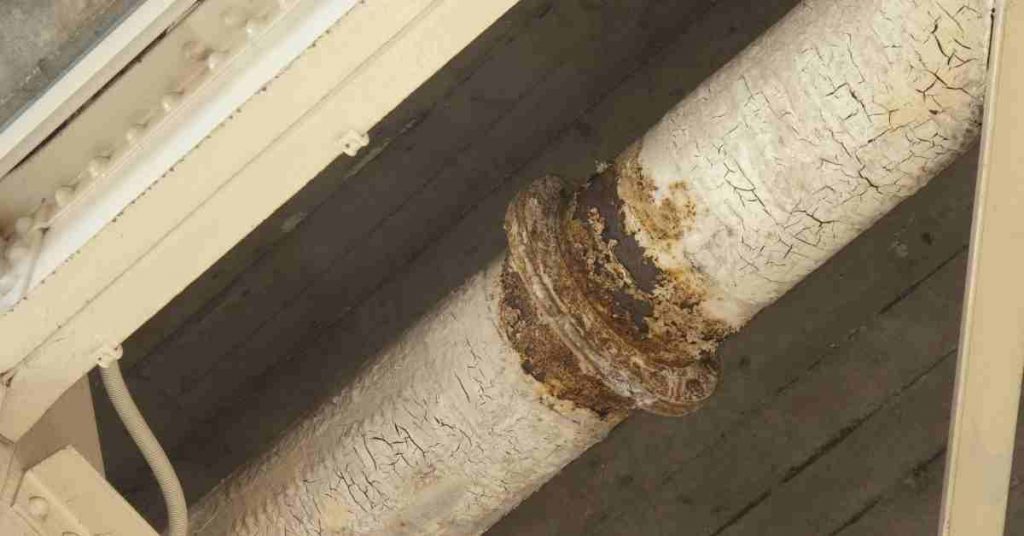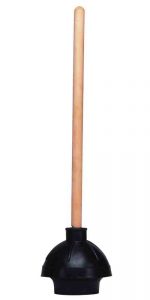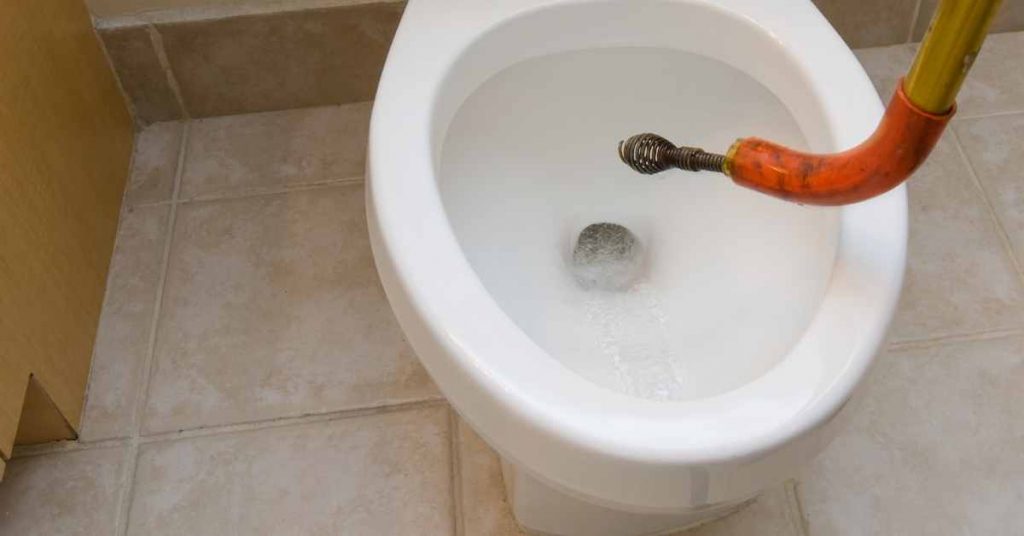
Why do plumbers advise against Drano? Is Drano that bad for your plumbing?
Plumbers often have reservations about Drano and similar chemical drain cleaners for several reasons:
- Temporary Fix: Drano typically provides a temporary solution by breaking down clogs, but it may not address the underlying problem causing the blockage. This can lead to recurrent issues.
- Corrosive Properties: The harsh chemicals in Drano can be corrosive and may damage pipes over time, potentially leading to costly repairs or replacements.
- Safety Concerns: Drano can be hazardous to handle, posing risks to the plumber’s health if it comes into contact with skin or eyes. Inhaling its fumes can also be harmful.
- Ineffectiveness: In some cases, Drano may not effectively clear tough clogs, especially if they involve solid objects or extensive blockages.
- Environmental Impact: Improper disposal of Drano can harm the environment, as the chemicals can enter waterways and affect aquatic life.
How Drano Works
To understand how Drano works, you must first understand what is in it. What makes it clear clogs and why it is so corrosive.
Drano’s main active ingredient is sodium hydroxide, which is commonly known as lye or caustic soda. It also contains aluminum, salt, bleach and sodium nitrate.
When you pour Drano in a drain, an exothermic reaction takes place. An exothermic reaction is a reaction that produces heat.
The first reaction that happens is the decomposition of organic matter in the clog by the lye. That includes hair and grease, which as you know causes nasty clogs.
The lye then reacts with aluminum; a reaction that produces a lot of heat such the solution is at near boiling point. This second reaction speeds up the melting/decomposition of the organic matter.
Lye then reacts with the already softened grease to form a soapy substance. The soapy substance dissolves the already broken down clog which is then easy to flush down the drain.
Why You Shouldn’t Use Drano in Your Plumbing
And now let us look at why using Drano is bad for your plumbing in more details. The following are the 6 main reasons why plumbers hate Drano and why you should too:
1. Drano is bad for your Pipes
Unfortunately, whether you are using steel pipes or PVC pipes Drano is a bad choice for a drain cleaner. The high amount of heat produced during the reaction between lye and aluminum is bad news for your pipes.
To start with steel pipes, you already know that these pipes will start to corrode after some time. Now add heat into it.

The Drano sits in the pipes and starts to eat them slowly, while the heat produced causes sudden expansion of the pipes which ultimately weakens the them and continued usage of Drano will result in leaks.
PVC (plastic pipes) and any other plastics for that matter are badly affected by heat. If normal heat from the sun is enough to deform plastic pipes, just imagine what an exothermic chemical reaction will do to them.
The PVC pipes will soften and deform over time while the glue use to bind them together will be eaten away resulting in leaks. Fixing leaks in drain lines is not cheap.
2. Drano Can Crack a Toilet Bowl
Good toilets are very expensive. It is even worse since cracked toilets cannot be repaired. A replacement is the only way.
Unlike in other types of drains where the Drano is poured inside the drain line, in a toilet the Drano sits at the bottom of the toilet. This is because of how a toilet is designed.
Toilets have an S-shaped trap at the bottom, which is what allows you to have water at the bottom of the toilet. The water prevents sewer gases from coming up to the bathroom.
The trap is part of the toilet (unlike in a sink or tub) which is made of china. And what happens to china when it expands suddenly?
When, you pour Drano inside a toilet bowl, it sits at the bottom. That means that is where the reaction occurs.
The heat produced by the reaction causes the toilet china to expand suddenly and may even crack.
3. Drano Can Burn Skin, Eyes and Lungs
As I have mentioned, the lye in Drano works by decomposing organic matter. Your skin and the rest of your body is organic.
If in the process of using Drano it splashes and comes in contact with your skin, it can badly burn you. It is even worse if it splashes on your eyes as it can irritate and in the worst cases it can make you permanently blind.
The fumes produced especially when Drano is combined with other chemicals can cause damage to your lungs when inhaled.
4. Can’t be used with Other Methods
What happens when you attempt to clear your drain using Drano and the clog fails to clear? You will be left with a toxic solution inside your drain.
If you try plunging the drain, you risk the toxic chemical splashing on your body and burn your skin. On the other hand, using other chemical drain cleaners will result in a myriad of reactions with toxic fumes being emitted.
As a matter of fact, when you call a plumber with a clogged drain, the first question they will ask is if you have used Drano or other chemical drain cleaners to attempt to clear the clog.
Most plumbers will leave the house and come back after 24 hours. Drano in the pipes makes it unsafe for them to work on your drain.
Apart from that, the solution can damage some of the tools and equipment plumbers use to unclog drains.
5. Can’t be used on Septic Systems
If you are on a septic system, do not even think about using Drano. Septic tanks have billions of microbes which help break down the waste and keep the system running.
If you use Drano to clear drain clogs and you are on a septic system, the solution will kill the microbes inside the septic tank. The end result is that organic waste will not be broken down.
Without bacteria breaking down the waste, you will have sewage backing up to your house, a clogged leach field and expensive system to fix.
6. Drano Can Make a Clog Worse.
It is hard to imagine it but Drano can actually make a clog worse that it was. Needless to say, you will need to hire a plumber and pay more to fix the problem.
You see, if you have a nasty clog, Drano will partially break it down and then further down drain pipe the clog will congeal forming an even worse clog.
Alternatives
When I say that Drano is bad for plumbing I am not trying to have you hire plumbers. There are actually several ways you can clear drain clogs on your own that are safe for you and your plumbing.
Here are some of the alternatives to using Drano:
1. Plunge the Drain

A plunger will clear most drain clogs when used correctly. To do that however, you will need to start by selecting the right plunger.
There are 2 main types of plungers. These are cup plungers (flat-bottomed) and flange plungers (bell-shaped). Flange plungers are what you should use to unclog a toilet while cup plungers are for unclogging the other drains.
A flange plunger has a small opening at the bottom which helps it seal the toilet bowl outlet and therefore create a strong and effective suction.
To plunge properly, you need to have some water in the fixture. Enough water to cover the bottom of the plunger.
Place the plunger over the drain opening and start off by plunging gently to engage the plunger. Afterwards plunge aggressively for a few minutes without lifting the plunger.
When plunging sinks and bathtubs, make sure that you first plug off the drain overflows. That will prevent loss of the pressure generated by the plunger.
2. Snake the Drain

Snaking is not as easy as plunging but it is effective in pulling out physical clogs from the drain line, especially the toilet drain.
Actually, if the drain is clogged by something like a toy or comb, no amount of Drano or plunging will unclog it. You need to use a toilet auger.
It is important to learn how to snake a drain otherwise you may end up damaging the pipes with the snake. In the case of a shower, bathroom sink or bathtub, you can use a plastic snake (zip-it tool) to clear the clog which in most cases is caused by hair.
3. Use Baking Soda, Vinegar and Hot Water
Baking soda and vinegar are very effective in clearing drain clogs. They have an even high success rate when combined with hot water.
As matter of fact, this “drain treatment” is recommended even when the drains are not clogged as a preventive measure.
If the clogged drain has standing water, start by draining it away to give the solution a chance to work on the clog directly.
Pour 1 cup of baking soda in the drain slowly followed by another cup of vinegar. The substances will create a fizzing reaction.
Wait for about 15 minutes then pour about a gallon of boiling water in the drain. The water will clear and flush down the clog.
Be careful about using boiling water in a toilet bowl. Just use hot water but not boiling will do it.
4. Remove and Clean the P-trap

If the clog is in the bathroom or kitchen sink, there is another fantastic way to clear it. This involves removing and cleaning the P-trap.
If you check under your bathroom or kitchen sink, you will notice that part of the pipe is bent like the letter ‘U’, which also looks like an inverted P. That is what we call a P-trap.
A P-trap prevents sewer gases from coming up through the drain but also traps potential drain clogs. If you are dealing with a clogged sink, most of the time the clog will be in the trap.
Start by placing a small bucket or pan under the P-trap to drain the water in the inside. This prevents it from spilling on the floor.
Disconnect the 2 P-trap connections with your bare hands. Only use a wrench if the connections are too tight.
After removing the P-trap, inspect if it is clogged and if so clean it with warm soapy water. Also check if the pipe connected to the P-trap is clogged as well and clean it too.
Put back the P-trap and run water through the drain. That should fix the problem for you.
And basically that is why plumbers don’t recommend Drano and what you can do instead. Of course you can get away with using Drano once or even twice. I hope this guide was helpful.





